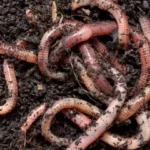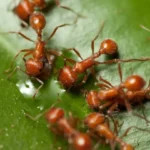If you’ve discovered termites in your garden or are concerned about potential infestations and their subsequent damage, you’re likely searching for a safe and effective solution – and fast! Termites pose a significant threat to gardens, directly and indirectly impacting a wide range of plants. Their infestations start from the roots and can spread throughout the entire plant, leading to its demise. So, how do you stay calm when choosing between harsh chemical treatments and natural alternatives?
Beneficial nematodes, specifically the Steinernema carpocapsae and Heterorhabditis bacteriophora, are highly effective in controlling termite populations. These microscopic, soil-dwelling organisms are natural predators of termites and can provide a biological and environmentally friendly solution to termite infestations.
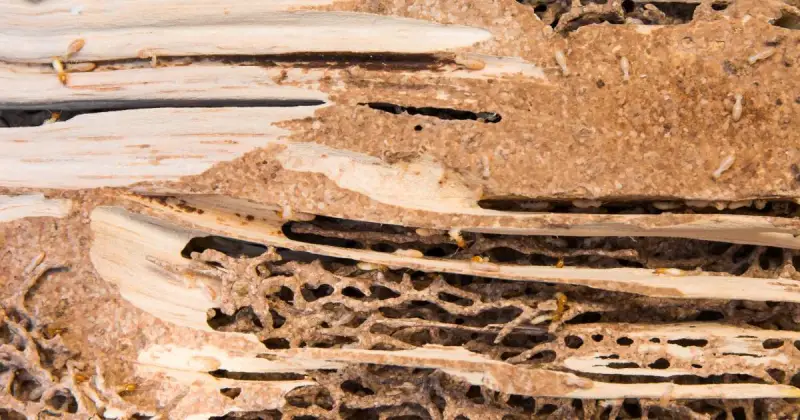
This article introduces you to beneficial nematodes for termites, a natural method that targets these pests without harming the surrounding environment. Read on to explore how beneficial nematodes work, their application, and what makes them an eco-friendly choice for pest control.
Additionally, you’ll uncover the right conditions for their use while gaining practical tips for integrating them into your termite management strategy. This insight could be vital to protecting your home from termite damage sustainably.
Humble Highlights
- Discover how nematodes can help against invading termite colonies in your garden AND this surprising and little-known characteristic nematodes can provide for your plants so you can provide ongoing pest control by as long as conditions remain favorable.
- Save time with these 6 steps to an effective nematode application, and allow these tiny garden friends to combat termites so you can support vigorous plant growth, leading to a thriving and productive backyard garden – even if you’re a complete beginner!
- Uncover these unique environmental benefits nematodes can offer your garden crops so you can maintain a balanced soil ecosystem by targeting pests while coexisting with beneficial organisms and promoting biodiversity and a healthy garden environment.
Benefits Of Using Beneficial Nematodes
Beneficial nematodes are an excellent alternative to traditional chemical methods for termite control. They offer several advantages that promote environmental sustainability and safety. One of the primary benefits of using nematodes is their eco-friendly nature.
Unlike chemical pesticides that can harm non-target organisms, nematodes have a negligible impact on pollinators, decomposers, and other beneficial garden insects, helping to maintain ecological balance.
Nematodes provide targeted control, as different species of nematodes target specific pest insects. This allows for precise termite control without harming other beneficial insects. 1

Another significant advantage of using beneficial nematodes for termite control is their safety for humans and animals. Nematodes are considered exceptionally safe for the environment, humans, and animals, making them an ideal choice for homeowners and gardeners who want to protect their families and pets from harmful chemicals.
Using nematodes aligns with integrated pest management principles, which aim to reduce reliance on harmful chemical pesticides and promote sustainable pest control practices. By leveraging the power of beneficial nematodes, homeowners and gardeners can effectively control termite infestations while promoting a healthy and safe environment for all.
Surprisingly, beneficial nematodes can improve plant root health by creating a more favorable soil environment. When nematodes target and reduce populations of root-feeding pests, they help minimize root damage.
Healthy roots are essential for optimal plant growth, as they improve the uptake of water and nutrients. Additionally, beneficial nematodes can promote the activity of symbiotic microorganisms, which can further enhance soil fertility and structure. This creates a robust and resilient root system, leading to stronger, more vigorous plants.
By using nematodes, gardeners can achieve healthier plants that are more resistant to environmental stresses, such as drought and disease.
Application Techniques For Nematodes
To effectively use beneficial nematodes for controlling termites, proper application is crucial for maximizing the effectiveness of beneficial nematodes against termites in your garden:
- Identify Termite Infestations: Inspect your garden for signs like mud tubes, damaged wood, or hollowed-out plant stems.
- Prepare Nematode Solution: Dissolve the beneficial nematodes in water according to the manufacturer’s instructions. 2
- Apply Nematode Solution: Apply the solution directly to termite-infested areas, such as soil around plants, wooden structures, or potential harboring sites.
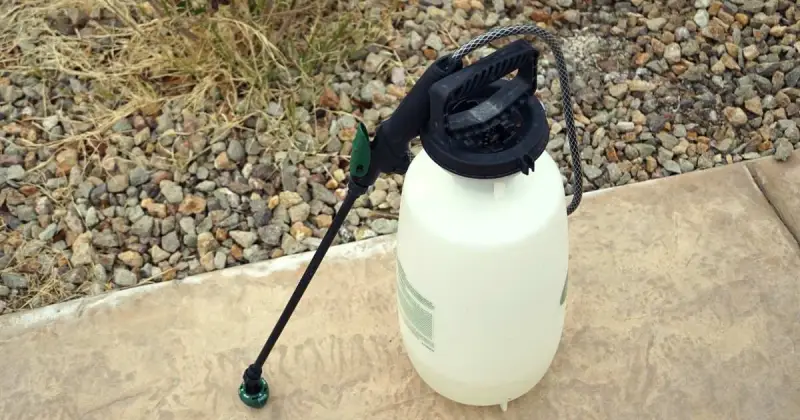
- Consistent Application: Daily applications are recommended for optimal results, ensuring continuous exposure and increasing nematode-termite encounters.
- Maintain Soil Moisture: Nematodes thrive in moist soil conditions, facilitating their movement and ability to locate termites.
- Monitor and Repeat: Monitor termite activity and reapply the nematode solution as needed, as eliminating a colony may take several weeks or months.
Effectiveness In Termite Control
Beneficial nematodes are highly effective in controlling termite populations by infecting and killing them upon contact. These organisms provide a natural and safe alternative to chemical treatments for termite infestations. Species like Steinernema riobrave, Steinernema carpocapsae, and Heterorhabditis heliothidis have proven effective against termites in controlled studies.
Applying beneficial nematodes to areas where termites are active can significantly reduce their numbers. They parasitize termite larvae and adults, disrupting their life cycle and reducing population growth.
Regularly applying beneficial nematodes is a critical component of long-term termite management strategies. Their ability to target termites at various life stages enhances their effectiveness as a pest control tool. 3
Using beneficial nematodes in termite control addresses current infestations and helps prevent future outbreaks, promoting a sustainable approach to pest management.
By incorporating beneficial nematodes into your termite control strategy, you can effectively manage termite populations in an eco-friendly and sustainable manner, protecting your property and supporting a healthy ecosystem. Check out the concise but informative video below that details how easy it can be to apply nematodes in your backyard garden!
Environmental Impact Of Nematodes
The environmental impact of using beneficial nematodes for termite control is remarkably minimal. These microscopic organisms have been extensively released in the field with negligible effects on non-target insects, making them exceptionally safe for the environment. By adopting nematodes as a biological control agent, gardeners can significantly reduce their reliance on harmful chemical pesticides, contributing to a healthier ecosystem.
Unlike conventional insecticides, which can lead to groundwater contamination and decreased biodiversity, nematodes pose no such risks. Their high specificity towards target pests ensures that beneficial insects like pollinators and decomposers remain unharmed.
This eco-friendly approach aligns with sustainable agriculture principles and integrated pest management, promoting a balanced and diverse ecosystem in our gardens. 4
| Environmental Advantages of Beneficial Nematodes |
|---|
| Precise Pest Control |
| Harmless to Plants and Animals |
| Conservation of Beneficial Insects |
| Eco-friendly Pest Management |
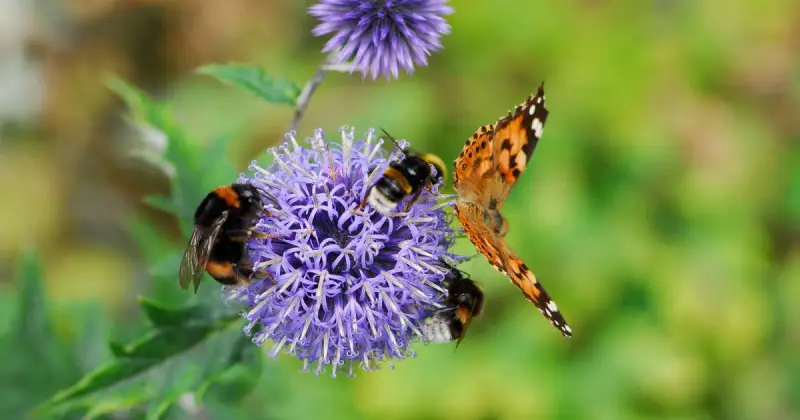
Considerations Before Using Nematodes
While beneficial nematodes offer a practical and eco-friendly solution for termite control, there are a few considerations to keep in mind:
- Nematode Quality: The quantity and quality of nematodes in commercial products can vary, so purchasing from reputable suppliers is essential.
- Environmental Factors: Soil properties, moisture levels, temperature, and competitive interactions with other soil organisms can influence nematode effectiveness in field applications.
- Pesticide Compatibility: Certain insecticides and nematicides can be lethal to beneficial nematodes, so refer to product labels for compatibility information. 5
It’s important to remember that nematodes are helpful in the garden but susceptible to ultraviolet (UV) light. UV light can quickly kill nematodes, significantly reducing their effectiveness if exposed to sunlight during application.
It’s crucial to apply beneficial nematodes under the right conditions to maximize their effectiveness and ensure they successfully reach and infect their target pests.
1. To avoid exposure to harmful UV rays, apply nematodes early in the morning or late in the evening when sunlight is minimal.
2. Ensure the soil is adequately moist before and after application as moist soil helps nematodes move through the soil and locate their host insects more efficiently.
3. Nematodes should be stored properly before use in a cool, dark place, such as a refrigerator, to maintain viability. Always follow the storage instructions provided by the manufacturer to ensure they remain effective until application.
4. Mix nematodes with water according to the manufacturer’s instructions to ensure even distribution and practical application.
5. Consider the soil type and condition. Compacted or clay-heavy soils can limit nematode movement. Aerating the soil or applying nematodes to looser, well-drained soils can improve their effectiveness.

Conclusion
Beneficial nematodes are proving to be a natural and highly effective method for termite control, boasting a success rate of up to 85% in eradicating termite colonies. These microscopic garden allies can safeguard your home against these damaging pests without the environmental impact associated with chemical treatments.
Introducing beneficial nematodes could be a wise decision for those seeking a safe and sustainable approach to pest management. They protect your investment and contribute to a healthier ecosystem around your home.
Consider this method a testament to nature’s power to provide solutions that work harmoniously with the environment.
Have you applied nematodes to help curb swelling termite infestations in your backyard garden? We’d love to hear your story and the results. Drop us a line in the comment section below and share your experience using these invisible helpers with your fellow growers!
SOURCES
- National Library Of Medicine, National Center For Biotechnology Information – Mass Production Of The Beneficial Nematode Heterorhabditis Bacteriophora And Its Bacterial Symbiont Photorhabdus Luminescens
- Michigan State University, Department Of Horticulture – Managing Nematodes, Cover Crops, And Soil Health In Diverse Cropping Systems
- Wikipedia – Termite
- National Library Of Medicine, National Center For Biotechnology Information – Life In A Contaminated Environment: How Soil Nematodes Can Indicate Long-Term Heavy-Metal Pollution
- National Library Of Medicine, National Center For Biotechnology Information – Nematodes Ultrastructure: Complex Systems And Processes


